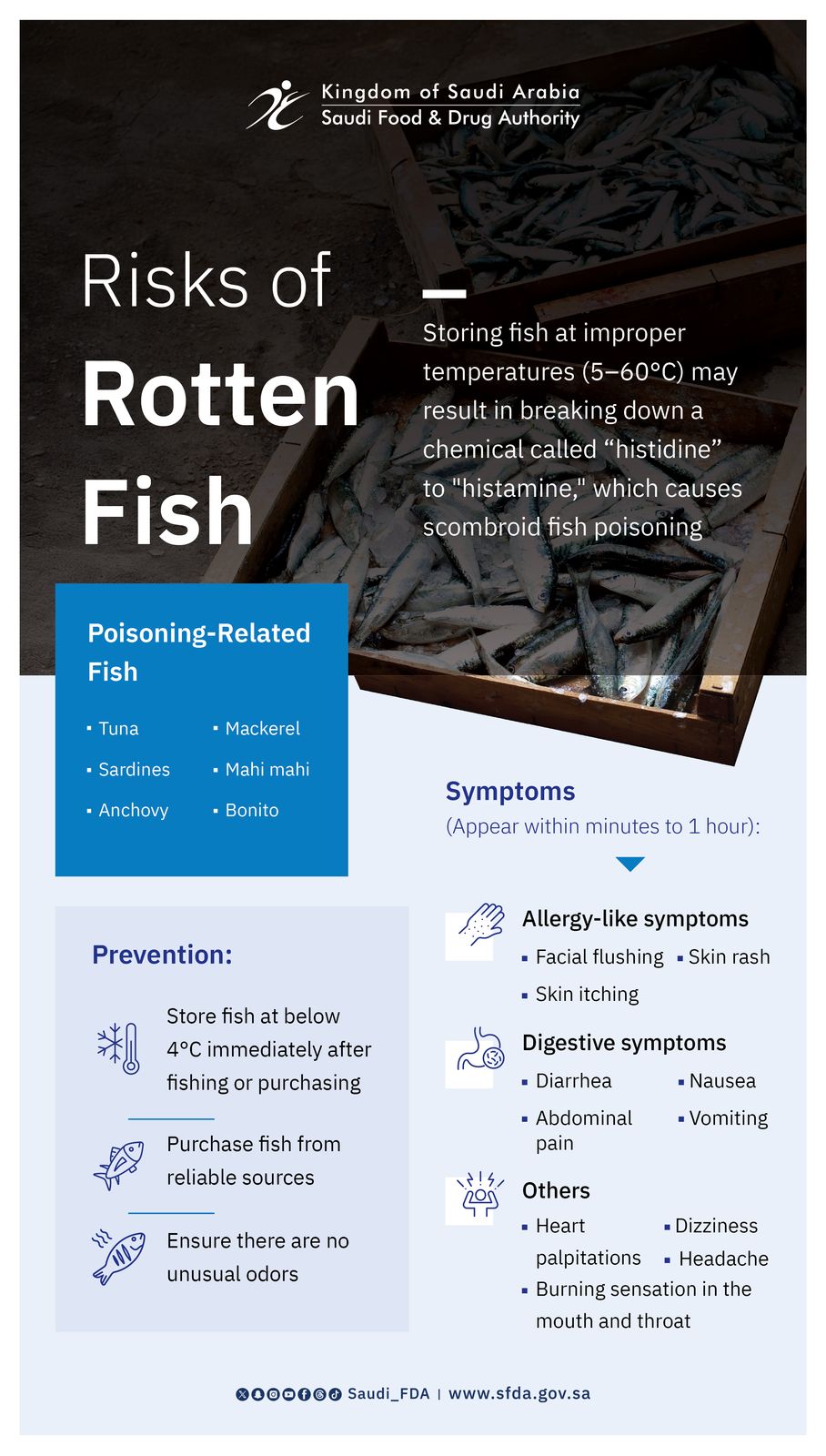The SFDA Highlights Common Fish Food Poisoning Types and Prevention Methods
2025-04-16
As part of its ongoing public awareness initiatives, the Saudi Food and Drug Authority (SFDA) has released information detailing common types of food poisoning linked to fish consumption and crucial preventative measures to protect public health. Recognizing the significant nutritional benefits of fish, including vital omega-3 fatty acids, the SFDA underscores the importance of proper handling throughout the supply chain and in consumers' homes.
The SFDA emphasizes that ensuring fish safety begins at the point of purchase. Consumers are advised to buy fish from reputable vendors who strictly adhere to refrigeration and hygiene standards. When selecting fish, it should be stored adequately with ice in designated refrigerators and should exhibit a natural, fresh odor, clear eyes, and firm, elastic flesh that springs back when pressed.
For safe storage at home, the SFDA recommends maintaining fish at 4°C or lower in the refrigerator and freezing it at -18°C or lower, ensuring it is tightly wrapped in freezer bags or paper. During preparation, thorough handwashing before and after handling raw fish is essential, along with the use of clean utensils and separate cutting boards. Washing fish under running water before thorough cooking is also advised. Fish should be cooked to an internal temperature of at least 75°C until the flesh is firm.
The authority cautioned that storing fish at temperatures between 5°C and 60°C can foster the growth of bacteria that convert histidine to histamine, leading to scombroid poisoning. Critically, cooking does not eliminate histamine. Symptoms of this type of poisoning can appear rapidly after consumption and include facial and neck redness, rash, itching, as well as gastrointestinal distress such as nausea, vomiting, diarrhea, and abdominal pain. Other symptoms may include headache, dizziness, palpitations, and a burning sensation in the mouth and throat.
The SFDA clarified that scombroid poisoning is typically associated with specific fish species like tuna, mackerel, sardines, anchovies, mahi-mahi, and bonito. It stressed the necessity of storing these fish below 4°C immediately after being caught or purchased and ensuring they lack any pungent ammonia-like odors.
Furthermore, the SFDA addressed the risk of botulism in traditionally prepared salted and fermented fish products such as feseekh and herring. This risk stems from the potential growth of Clostridium botulinum bacteria and necessitates storage below 4°C, along with thorough salting both internally and externally during preparation.
Regarding raw or undercooked salmon, the authority highlighted the potential presence of parasites (like Anisakis) and bacteria (such as Salmonella and Listeria) that can cause intestinal issues. It advised consumers to choose salmon specifically intended for raw consumption (e.g., pre-frozen sushi) and to ensure that the salmon has been frozen at -20°C for 7 days or -35°C for 15 hours. Such fish should be stored below 4°C and consumed within two days of thawing. Strict hygiene during preparation is also crucial.
Concerning canned sardines, the SFDA warned about the risk of botulism poisoning if improperly stored, due to the anaerobic growth of Clostridium botulinum. Consumers are urged to avoid consuming cans that are bulging, leaking, exhibit an unnatural odor, or are past their expiration date. Proper storage in a cool, dry place and thorough cooking to at least 75°C before consumption are strongly recommended.
This comprehensive awareness campaign aligns with the SFDA's fourth strategic plan’s objective, reinforcing its commitment to enhancing public knowledge, mitigating health risks, and promoting safe food handling practices across various consumer segments.




